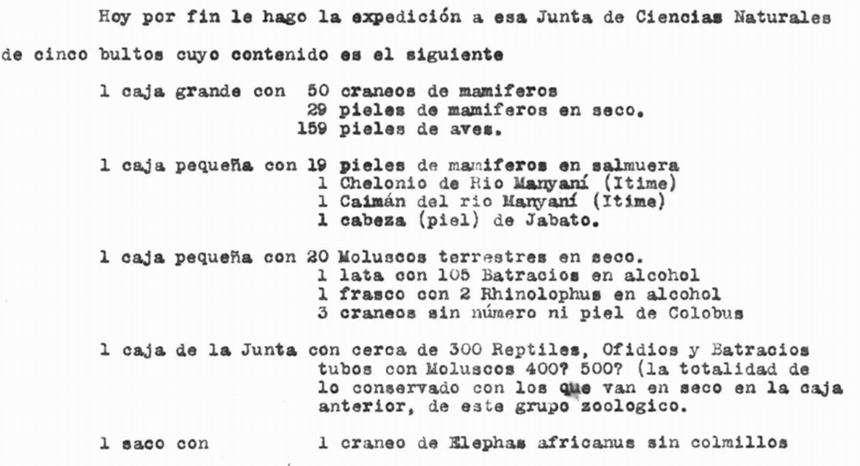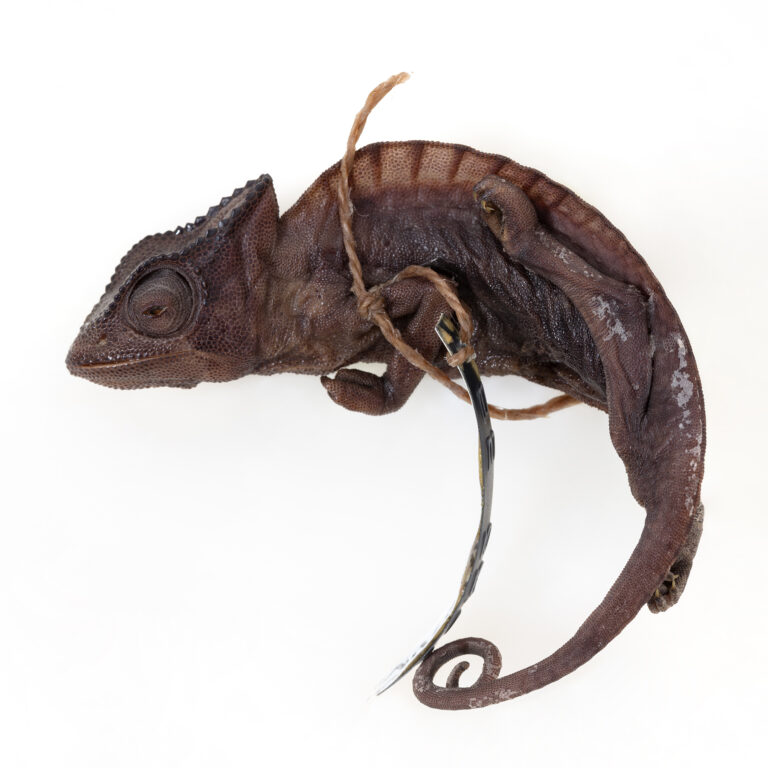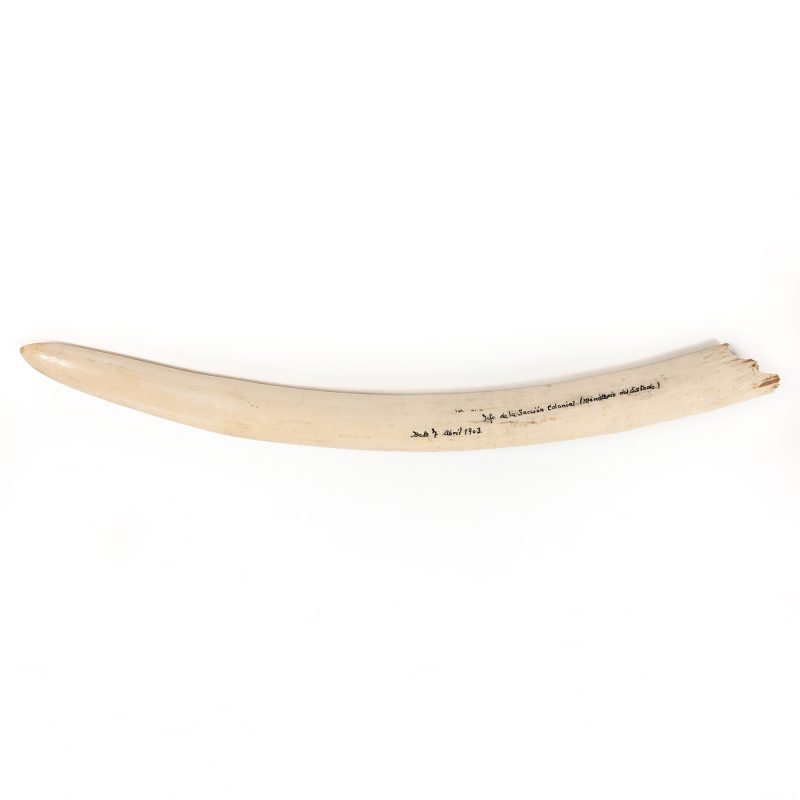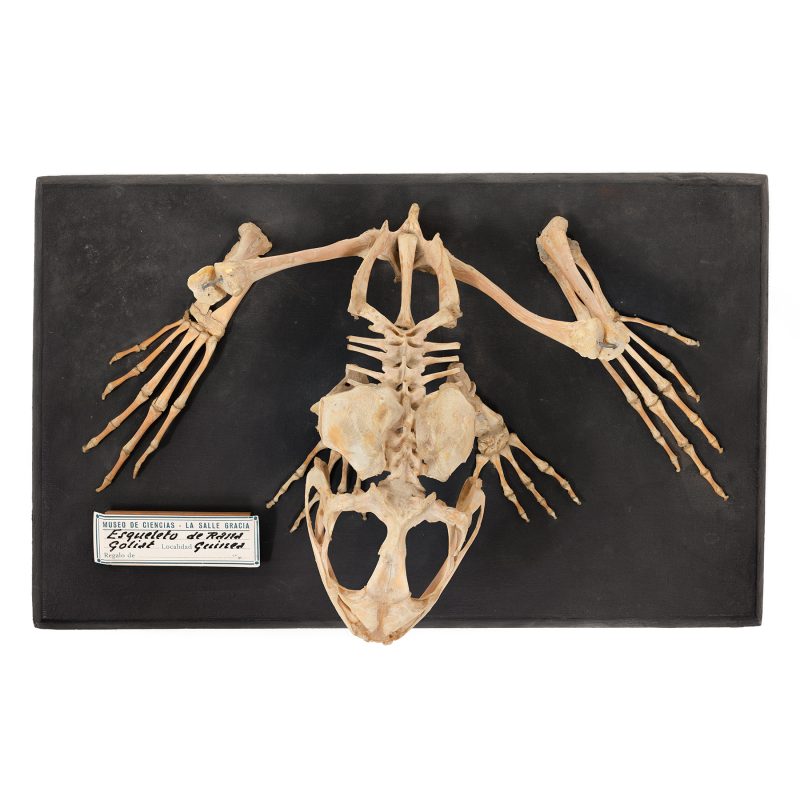Summary of results
This iguanid lizard was collected in July 1919 by Manuel and Fernando Martínez de la Escalera during their expedition to Equatorial Guinea to collect objects and specimens for the Natural Sciences Museum of Barcelona, the National Museum of Anthropology, and the National Museum of Natural Sciences.
Chronological reconstruction of provenance
In 1919, the Board of the Natural Sciences Museum of Barcelona decided to support the proposal of Manuel Martínez de la Escalera and his son Fernando Martínez de la Escalera to carry out an expedition to Equatorial Guinea to collect specimens of mammals, birds, reptiles, and insects for the Natural Sciences Museum of Barcelona. In this expedition both invertebrates and vertebrates were collected and brought back to the museum.
In February 1919, Martínez de la Escalera made an offer to the General Board of Natural Sciences to make an expedition to Fernando Poo to collect specimens. Discussions with the museum envisaged an abundant hunt for mammals and ‘a couple of thousand reptiles and batrachians’. This trip was also promoted by the Museum of Anthropology in Madrid, which hoped to obtain part of the collected specimens. However, the Natural Sciences Museum requested exclusivity in the collection of birds, reptiles, and amphibians.
On 7 April 1919, the General Board of Natural Sciences sent a letter to Manuel Martínez de la Escalera in which they established the conditions of the expedition and requested that all the specimens to be collected should be solely for the Natural Sciences Museum. A total payment for the expedition of four thousand pesetas was agreed. The specimens were to be paid separately, one price for the main lot and another price for the duplicates; all of this after the inventory and valuation had been carried out. The trip was made on a transatlantic steamer, lent free of charge by the Marquess of Comillas at the request of the secretary of the General Board of Natural Sciences Josep Maluquer (1883–1960).
The trip was made to the island of Bioko and the mainland and lasted about four months. De la Escalera notes that ‘the reptiles in the first shipment came from the Kameron internment facilities around Santa Isabel (1st and 3rd camps)’.
On 22 September, Manuel Martínez de la Escalera returned to Cádiz and, a few days later, to Barcelona. But it was not until 28 November 1919 that Martínez de la Escalera issued an inventory of the material collected by the museum. From this inventory, we can deduce that the specimen of the iguanid lizard we are studying was one of the three hundred reptiles described in it.

Ignasi de Segarra (1889–1940), entomologist, ornithologist, and curator of zoology, drew up a report on the material received. The main complaint was that it had arrived in very poor condition, in some cases destroyed. In addition, it was poorly labelled and badly preserved, so its final value was far from what was expected.
On 15 March of the same year, the secretary of the firm of naturalist James Rowland Ward (1848–1912), established in Piccadilly, wrote to the Natural Sciences Museum asking for a price list of specimens. This fact raises the possibility that the final destination of all the specimens collected was not only the Natural Sciences Museum.
This 1919 expedition was also very significant for the amount of ethnographic material collected. This material is now part of the collection of the National Museum of Anthropology.
Estimation of provenance
This chameleon is part of the group of animals that Martínez de la Escalera compiled in the expedition carried out in 1919 and promoted by the Museo de Ciencias Naturales, the Museo Anthropologíco de Madrid and the Junta de Ciencias Naturales of the City Council of Barcelona. It could be that it was part of the reptiles collected in the Cameroon internment camp.
Possible alternative classifications
–
Complementary sources
Archives:
Arxius del Museu de Ciències Naturals:
id1584> Condicions acordades en l’expedició de Martínez de la Escalera a la Guinea Espanyola; informe d’Ignasi de Sagarra sobre els treballs realitzats al Departament de Zoologia entre setembre i novembre de 1920.
id1203> Carta de Manuel Martínez de la Escalera a Josep Maluquer on l’informa que el pròxim mes de març marxa a Fernando Poo amb el seu fill i demana si el Museu està disposat a recollir part de les col·leccions que reuneixin (rèptils, mamífers i articulats).
Bibliography:
Martín Albaladejo, C. i Izquierdo Moya, I. (ed.) (2011). Al encuentro del naturalista Manuel Martínez de la Escalera (1867-1949). Monografia del Museo Nacional de Ciencias Naturales. Madrid: CSIC.



